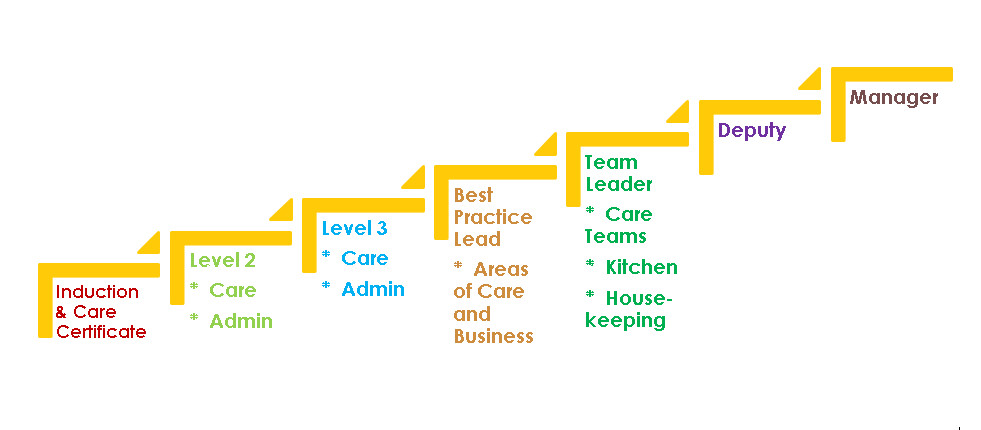Career progression opportunities for social care settings
The role of a manager is a difficult one, made even more so by the challenges faced during the COVID pandemic. In Nottinghamshire, we are seeing managers not only leaving their jobs but leaving the sector as well. This is on top of the fact that we had a high number of services without a Registered Manager before the pandemic emerged.
Therefore, it is more important than ever to ensure that Registered Managers can rely on a well-trained team of employees for support.

We know from independent surveys that one key reason why people leave is that they do not have the opportunity to use their skills and initiative or to grow and advance their careers.
Every hierarchy within an organisation may be slightly different. Within a health and social care setting, you will find that you should be able to identify the next step on the career ladder from the diagram above, for each of your employees.
As a manager, can you answer 'yes' to the following questions?
-
Do people at all levels within your care organisation have the training and competence to perform their role?
-
As a manager, do your staff contribute positively to your role?
-
Are you confident that within your team you have competent cover in the absence of key members of staff?
-
Are your Leaders of Best Practice confident in their subject area and do they understand what is required of them to cascade that best practice to the rest of the workforce?
-
Are you confident that your supervisors and team leaders have the skills, attitudes and behaviours needed to support and motivate their teams?
If you are unsure or have answered 'no' to any of the above, you may benefit from reflecting on the career pathways in your organisation and considering whether there is an opportunity to develop them.
Opportunities to motivate and reward within an organisation can be built into your career progression pathways by creating sideways roles such as ‘Best Practice Lead’ and recognising potential management talent by developing Team Leader roles.
A structure that has smaller teams provides the opportunity to develop team leaders who can take on responsibilities for supporting, motivating and developing the members of their teams. This can share the workload of supervising large numbers of staff, rather than making it a large and difficult task for a small number of more senior managers.
Other benefits are:
-
Clear communication structures for cascading information.
-
Team relationship building.
-
Managers are closer to the work being carried out, enabling faster feedback and reinforcement of excellent working practices that organisations want to see embedded and modelled in everyday working throughout the workforce.
-
More opportunities to identify and assess management skills for succession planning to Team Management, Deputy and Registered Management roles.






